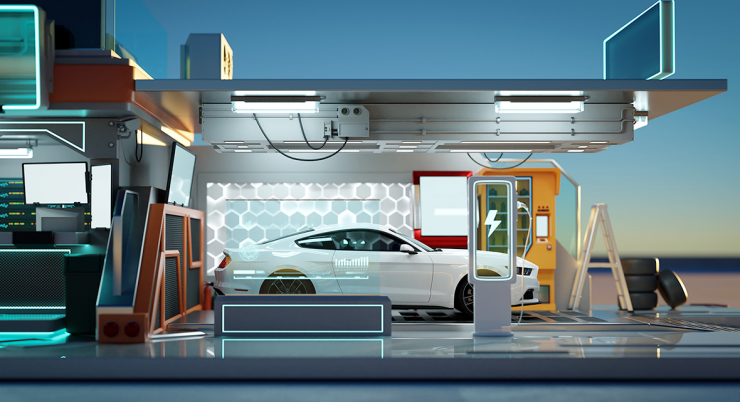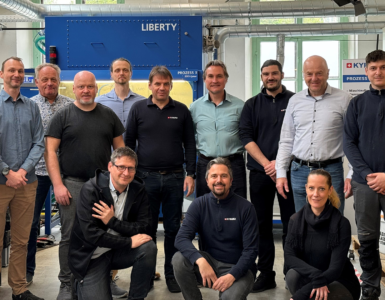SK Innovation aims for battery recycling business, taking a further step in the EV battery market.
Climate change and many environmental issues are pressing the electric vehicle (EV) market to grow fast. According to the data revealed by EV Volumes, about 605,400 units, including BEV & PHEV & FCEV, were sold globally in June. This is a new all-time-high, surpassing the sales number of December 2020, and June y-o-y growth stands at +150%.
On July 14th, the European Commission announced the “Fit for 55” – a comprehensive set of solutions for climate action. One of the major proposal in the Fit for 55 is reducing carbon emission from vehicles.
The new targets require average emissions of new cars to be reduced by 55% from 2030 and 100% from 2035, compared to 2021 levels. This actually means to ban sales of ICE (Internal Combustion Engine) vehicles in all member countries of EU from 2035. As a result, the industry predicts that the growth of the EV market will further accelerate.

Keeping pace with the rapid growth of EV market, the EV battery market is also blooming fast. EV Volumes expects that the global demand for EV battery will reach 2,740 GWh in 2030. Given that the average lifespan of the battery is 6-10 years, the industry also expects this will lead to dramatic increase in the disposal of used batteries.
In fact, the global market for battery recycling will grow more than 113 times bigger from 1.2 GWh this year to 136 GWh in 2030, according market research institute Guide House Insights. SNE Research also forecasts the used battery market will grow to USD 18.1 billion in 2030. Not to mention the environment issues regarding used batteries, it is to give roll out detail plans regarding how to reuse and recycle the huge amount of EV batteries.
ㅣStep 1 to build a circular economy for batteries: Reuse
EV batteries consists of cells, modules, and packs. The minimum unit for a battery is a cell, made of various materials. A module is a certain amount of cells packed into the frame which protects the contents from outside impact, heat, etc. This module is combined with the system for control and protection, such as the BMS (Battery Management System) and the cooling system and this combined body is a pack.
Reuse literally means to use the batteries again. Here, degraded or wasted batteries are used with reassigned purposes. First, they are examined for residual energy and charge/discharge and for those recollected due to relatively better performance, we can reassemble them as modules and packs to reuse.
ESS (Energy Storage System) can be a good example of battery reuse. It is known that the batteries used for the ESS can retain availability until the capacity decreased to 50%. The National Renewable Energy Laboratory in the US also supported this with their analysis that a wasted battery can be reused as the ESS for another decade, even though its capacity fell to 70% of a new one. These used batteries are effective also in a circular economic view, because they can be reused for other purposes such as emergency power device or other electronic mobility equipment.

Step 2 to build a circular economy for batteries: Recycle
Generally, batteries not preferable for reuse and already reused batteries are recycled. Recycling batteries means extracting valuable metallic resources, such as nickel, cobalt, etc. from collected batteries through physical and chemical disintegration. The industry analyzed that battery recycling can reduce carbon emission from the EVs as much as 7%.
Extracting valuable metallic resources requires pre-processing. Discharged waste batteries are deactivated and physically dismantled to collect parts made of aluminum. Then, a mixture of ‘Black Powder’ containing lithium, nickel, cobalt and manganese is produced from mechanical grinding and crushing.
What remained from the pre-process needs to pass one of the three processes as post-process: the dry process, the wet process, and the direct recycling. During the dry process, the remains are processed with smelting(1) reduction under very high temperature. Nickel, cobalt, copper, etc. are extracted during the process. During the wet process, black powder, the product from pre-processing, is dissolved in acid to collect resources as refined chemical compounds or metals. And the last process, direct recycling, makes cathodic material into regenerated form for use to new products, though it is not yet utilized for mass-production.

SK Innovation to spearhead battery recycle market with cutting edge technology
On July 1st, through SK Innovation Story Day event, SK Innovation to change the identity of the company from “Carbon to Green”. The essence of what the leaders of SK Innovation made clear that day is sorted into three major ideas:
- Green Anchoring – strengthening the green portfolio including batteries, BMR (Battery Metal Recycle)
- Green Transformation – transformation of its current projects into eco-friendlier business model, such as plastic recycling
- Earlier Achievement of Net Zero, the state where net emission of greenhouse gas reaches zero
All of the three above overlap on the motto, ‘Carbon to Green,’ changing current business structure of the company, which is relying to carbon, to the structure with more green projects.
Especially, SK Innovation already has applied for 54 patents in battery reuse. Under the motto of “mining batteries from batteries,” the company has developed its own technology to collect lithium hydroxide based on the experience from operating oil refineries.
Valuable minerals that are found from lithium ion batteries include lithium, nickel, cobalt, and manages. In 2019, SK Innovation has developed an original technology for lithium collection in the form of lithium hydroxide (LiOH), which can be directly applied to cathodic material production of high-Ni batteries like NCM811 (batteries with 8:1:1 ratio of nickel-cobalt-manganese).
In terms of used battery recycling technology, extracting the key materials, such as lithium, nickel, and cobalt from cathodes has already been commercialized, but the technology for collecting lithium in the form of high-purity lithium hydroxide is not there yet. It is acknowledged that the lithium hydroxide collection technology SK Innovation developed has an advantage of extracting key materials, such as nickel and cobalt in higher volumes and purity.
Moreover, utilization of lithium hydroxide, nickel, cobalt, and manganese extracted from used batteries also grants a competitive edge to secure the carbon credit. SK Innovation’s extraction technology of lithium hydroxide can reduce carbon emission to 40-70% of the emission from mining lithium at mines or saline lakes and processing it.
Recently, several manufacturers of completed vehicles in Europe are asking their subcontractors to report the carbon emission during the processes to produce the parts. In such circumstance, reduction of carbon emission through SK Innovation’s technology is considered meaningful among the industry.
Therefore, with this cutting edge technology to drive its effort for battery recycling, SK Innovation is planning to expand the use of the batteries into ESS, flying cars, robots, etc., other than just EVs. Also, the company is going to develop and foster new projects, for example, the BaaS (Battery as a Service) platform project to manage batteries more effectively along the life cycle.
SK Innovation aims for battery recycling business, taking a further step in the EV battery market, August 13, 2021









